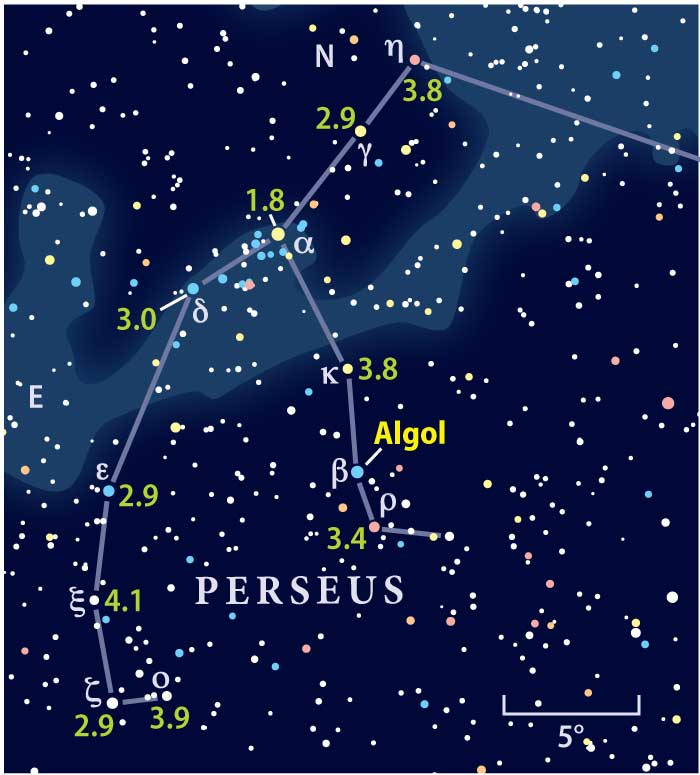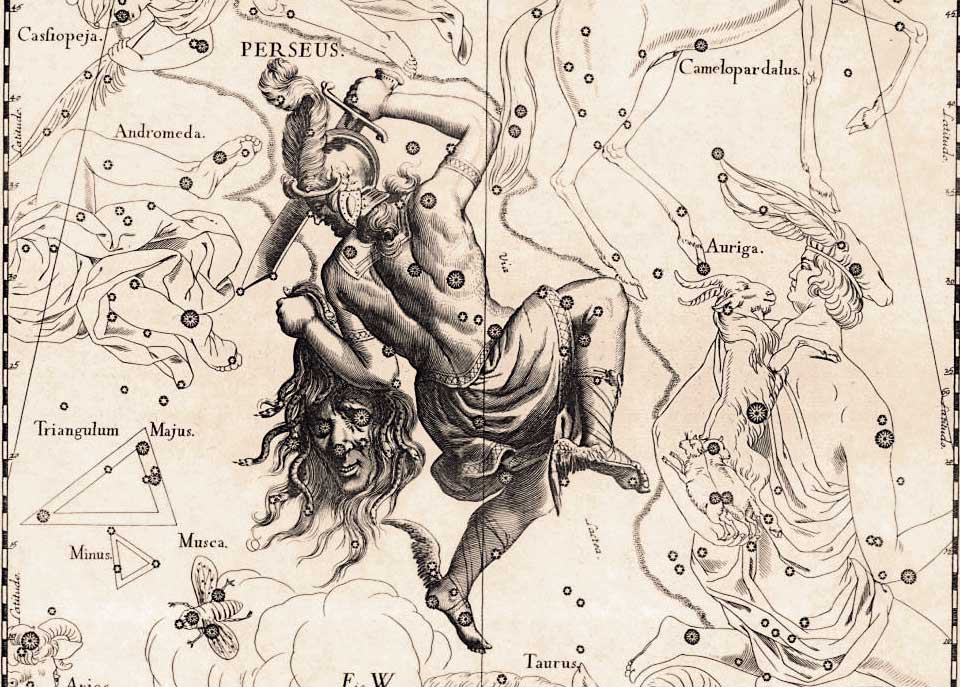The “ghoul”
In the classical view of the sky, Algol represents the Gorgon Medusa’s severed head, which Perseus clasps firmly in his left hand by the snakes the monster had for hair. In the Iliad, Homer tells us the head is “a ghastly sight, deformed and dreadful.” Others have associated Algol with one of the Gorgon’s eyes, capable of turning an onlooker to stone.
It’s not hard to envision Algol as a corpse eater if you look through the eyes of ancient skywatchers who imagined the night sky as a celestial graveyard filled with the souls of their ancestors. Seeing 70 percent of Algol’s light suddenly “consumed,” only to have it mysteriously restored, then devoured again days later, must have instilled in them a sense of dread.
Stellar magic
Algol “winks” because it is an eclipsing binary star (a faint K-type star and a bright B-type star), a system whose members pass in front of each other from Earth’s perspective. (It is, in fact, the prototype of this class.) Most of the time, Algol shines at 2nd magnitude, about the same as the brighter stars in the Big Dipper. But once every 2.87 days, the fainter star in the system passes in front of the brighter one; we see Algol begin to fade until its light dips to a minimum magnitude of 3.4. It shines thus for about two hours before the spectacle starts to reverse and Algol’s light returns to what Serviss called “pristine splendor.”
| Algol’s November minima |
|
| Date | Time (UT) |
| Nov. 1 | 22h51m |
| Nov. 4 | 19h40m |
| Nov. 7 | 16h29m |
| Nov. 10 | 13h18m |
| Nov. 13 | 10h07m |
| Nov. 16 | 06h56m |
| Nov. 19 | 03h45m |
| Nov. 22 | 00h34m |
| Nov. 24 | 21h23m |
| Nov. 27 | 18h12m |
| Nov. 30 | 15h01m |
The best way to record Algol’s changes is to compare its brightness with other stars of known magnitude that do not vary in brightness. The chart on this page shows Algol and several nearby stars whose magnitudes cover the variable’s range.
As always, let me know how you do at someara@interpac.net.












